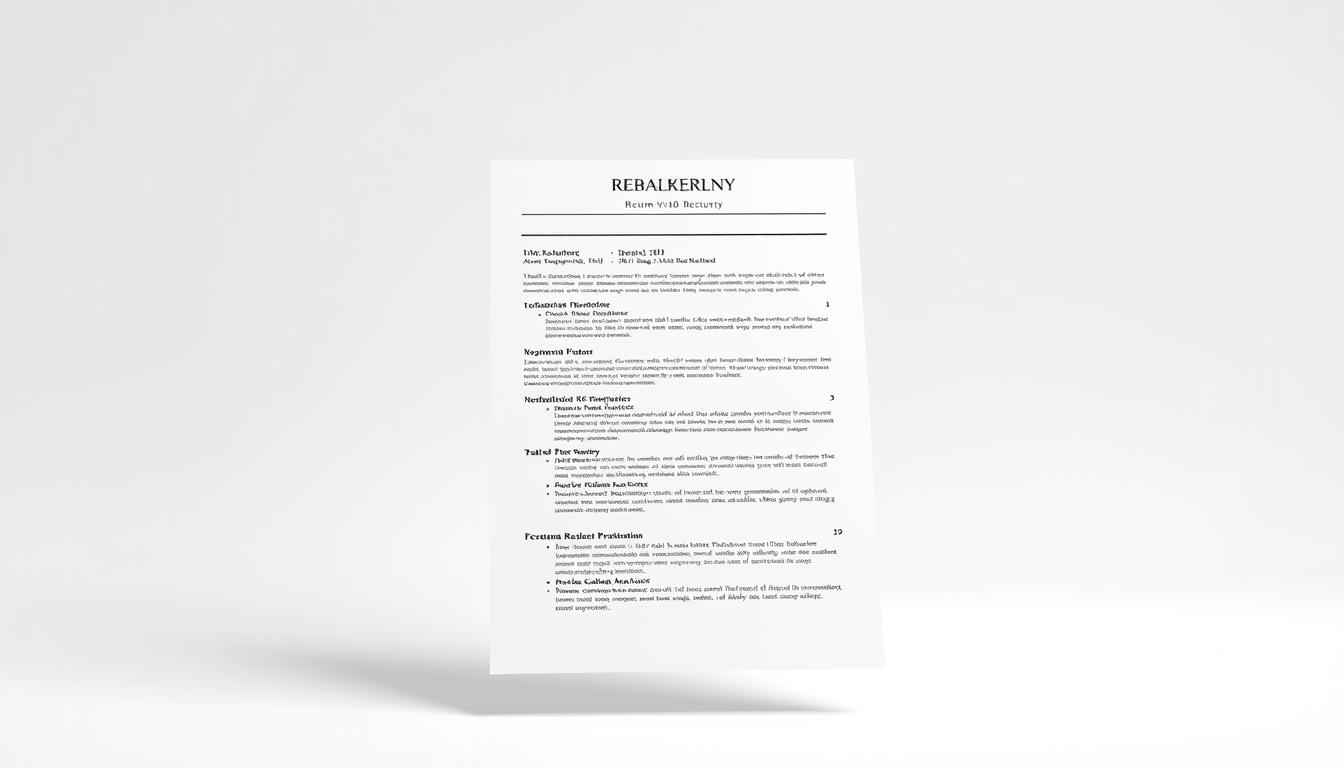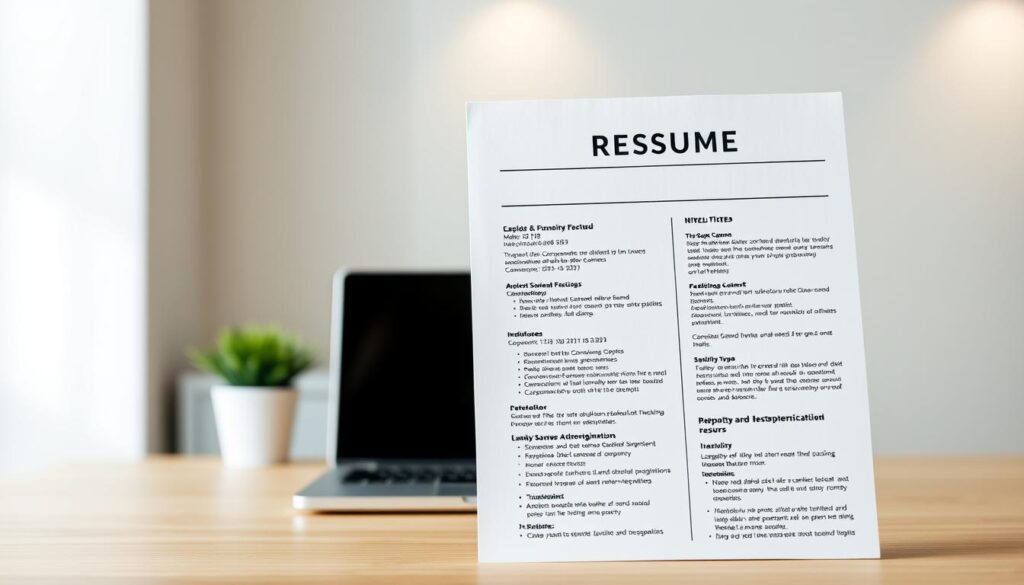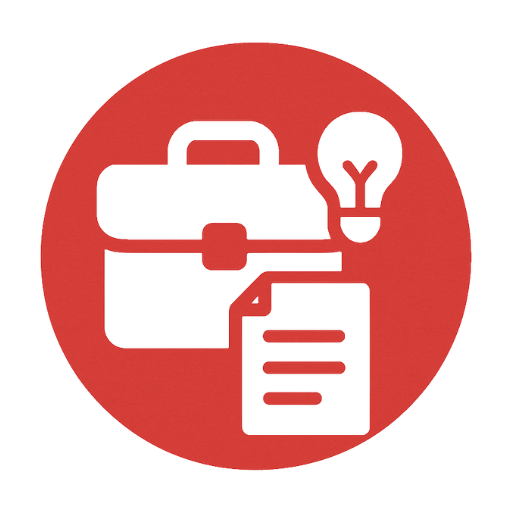How to Write a Resume That Passes ATS Filters

In today’s job market, a well-made resume is key. 75% of job applications don’t get seen by human eyes. And 99% of Fortune 500 companies rely on ATS software to find the right candidates.
Knowing how ATS works is important. Making your resume ATS-friendly can really help. It shows off your skills and experience, helping you get past ATS filters.
By making your resume ATS-ready, you boost your chances of getting noticed. This is the first step to getting an interview.
Understanding ATS: What It Is and Why It Matters
Applicant Tracking Systems have changed the hiring game. It’s vital for job seekers to get how they work. An Applicant Tracking System (ATS) is software that helps recruiters sort through resumes. It scans and ranks applications to find the best fit.
ATS makes hiring faster by automating the first step. It saves time for hiring managers and cuts down bias. This is because it looks only at what’s in the resume.
Knowing how ATS works is key for job seekers. It affects how they should write their resumes. By making resumes ATS-friendly, applicants boost their chances of getting past the first round.
Companies gain from using ATS. It saves time and money on manual screening. It also makes hiring more efficient. For job seekers, understanding ATS means their resumes get seen by the right people.
By understanding ATS, job applicants can tailor their resumes better. This improves their chances of getting hired. It’s all about meeting the ATS’s needs.
The Reality of ATS Filtering: Statistics and Impact
ATS filtering has changed how companies handle job applications. It’s key for job seekers to grasp its effects. Jobscan reports that over 98% of Fortune 500 companies use an ATS. This means most job applications go through an ATS when submitted online.
The effect of ATS on job applications is big. Resume filtering stats show up to 75% of resumes are rejected by ATS. This is often because they lack the right keywords or have the wrong format. It shows how vital it is to make resumes ATS-friendly.
Given ATS’s widespread use, job seekers must tailor their resumes. Knowing how ATS works and adjusting resumes can help applicants get past the initial screening.
Success hinges on using the right keywords, a clear format, and a smart approach to resume writing. This way, job seekers can boost their resume’s visibility and get more interview chances.
How to Write a Resume That Passes ATS Filters: Core Principles
ATS filters are the first step in the hiring process. To get past them, you need a resume that’s optimized for ATS. This means your resume must be tailored to pass through these filters.
Keyword Optimization is key. TopResume found that using the right keywords is crucial. Make sure to include job-related keywords in your summary and skills section.

Clear Formatting is also important. A well-formatted resume looks good and helps ATS read your info right. Use a clean layout, bullet points, and standard fonts.
Relevant Content is essential. Your resume should match the job you’re applying for. Highlight your relevant experience and achievements. TopResume says this makes your resume more likely to pass ATS filters.
By following these core principles, you can boost your chances of getting your resume seen by hiring managers. It’s all about making your resume ATS-friendly.
Optimizing Resume Format for ATS Success
To boost your resume’s chances of passing ATS filters, it’s key to optimize its format. A clean and simple resume is best. Avoid complex formatting like tables, images, columns, graphics, or unusual fonts.
Clear headings and bullet points are vital for an ATS-friendly resume. Stick to standard fonts like Arial, Calibri, or Helvetica. Make sure your headings stand out clearly.
When formatting, remember to use a reverse chronological format. It’s the most ATS-friendly. Don’t overdo it with sections or subsections. Keep your work experience easy to read.
Standardization is key for ATS success. Use common job titles and keywords from the job posting. Also, make sure your contact info is easy to find.
By following these tips for Optimizing Resume Format, you’ll up your chances of ATS success. Your resume will have a better shot at making it to the next round.
Keyword Optimization Strategies
The secret to a great ATS resume is in keyword optimization strategies. ATS use keywords to check if you fit the job. So, knowing how to pick and use the right keywords is key.
First, read the job description carefully. Look for key phrases and words that pop up a lot. These are the keywords the ATS looks for. Make a list and add these keywords to your resume, especially in “Summary,” “Skills,” and “Work Experience.”
Don’t overdo it with keyword stuffing. Too many keywords can make your resume look spammy to ATS. Use keywords in a way that makes your resume flow well and show off your skills.
Try using different forms of your keywords. For instance, if the job wants “project management,” you could also mention “project manager” or “managed projects.” This way, you cover more ground without repeating yourself too much.
Also, update your keyword list with the latest terms in your field. Industry jargon and buzzwords change, and keeping up makes your resume more relevant to both ATS and people.
Crafting ATS-Friendly Content Sections
Making your resume ATS-friendly is crucial. It means optimizing your work experience, education, and skills. This helps your resume get noticed.
When talking about your job, emphasize your achievements, not just your duties. Rohan Mahtani, Founder of Resume Worded, advises using numbers and metrics. For example, say “managed a team of 10 people, boosting productivity by 25%.”
When listing your education, include all important details. This includes the degree, institution, and completion date. Use standard formats for degrees and credentials so ATS can read them right. For instance, “Bachelor of Science in Computer Science, XYZ University, 2018” is clear and ATS-friendly.
Listing Relevant Coursework
Listing relevant coursework shows your skills in specific areas. Be specific about the courses you’ve taken and how they match the job. For a data science role, mentioning “Data Mining” or “Machine Learning” courses is helpful.
By optimizing these sections, you boost your resume’s chances of passing ATS filters. It also catches the eye of hiring managers.
Common ATS Resume Mistakes to Avoid
Getting past ATS filters is crucial. Many job seekers make mistakes that can block them from being seen by hiring managers.
Formatting Errors are common. Using images, charts, and graphics can confuse ATS systems. This can lead to your resume being misread or rejected. Also, complex formatting and unusual fonts can cause parsing errors.
Keyword Misuse is another big mistake. Keywords are key for ATS filters, but using too many can make your resume seem fake. This might get you rejected.
Irrelevant Content is a big error too. Adding info not related to the job can weaken your resume. This can make ATS systems rank it lower.
To make your resume ATS-friendly, keep it simple. Use keywords wisely and focus on your professional experience and skills. This will help you stand out.
Testing Your Resume Against ATS Filters
Testing your resume against ATS filters is key in the job hunt. Most companies use ATS to screen resumes. So, making sure your resume is ATS-friendly is vital to get an interview.
One way to check ATS compatibility is by saving your resume as a plain-text file. Save it as a .txt file and see how it looks. This helps spot any formatting problems ATS might cause. Look for weird line breaks, lost formatting, or messy text and fix it.
Another method is using online tools to scan your resume. These tools check if your resume works well with ATS. They look at keywords, formatting, and how ATS-friendly it is.
Key Takeaways for ATS Resume Testing: Make sure your resume is ATS-friendly. Use the right keywords and test it with the methods above. This boosts your resume’s chances in the job market.
Industry-Specific ATS Considerations
It’s crucial to tailor your resume to the industry you’re applying to for ATS success. Each industry has its own needs and keywords. These should be included in your resume to make it ATS-friendly.
Industry-specific keywords and terminology are key to getting past ATS filters. For example, a healthcare resume should use medical terms. A tech resume should include the latest tech jargon.

To make your resume industry-specific, research the job you want. Look for common keywords and phrases in the industry. Also, think about the formatting and structure of your resume. Different industries have different expectations.
A creative field resume might have a flexible format. But a corporate resume should stick to a traditional format. Knowing these differences helps make your resume ATS-friendly and appealing to hiring managers.
By customizing your resume for the industry and using the right keywords, you boost your chances of getting past ATS filters. This can lead to more interviews.
Conclusion
Job seekers can make their resumes more visible to recruiters by using the right strategies. An ATS Resume Writing Summary shows how important it is to tailor your resume for applicant tracking systems.
It’s key to optimize your resume for ATS in today’s job market. Knowing how ATS works and writing your resume in a way that ATS-friendly can help you stand out.
A resume that passes ATS filters is a big step towards getting hired. Job seekers should keep improving their resume writing skills to stay competitive in the job market.






